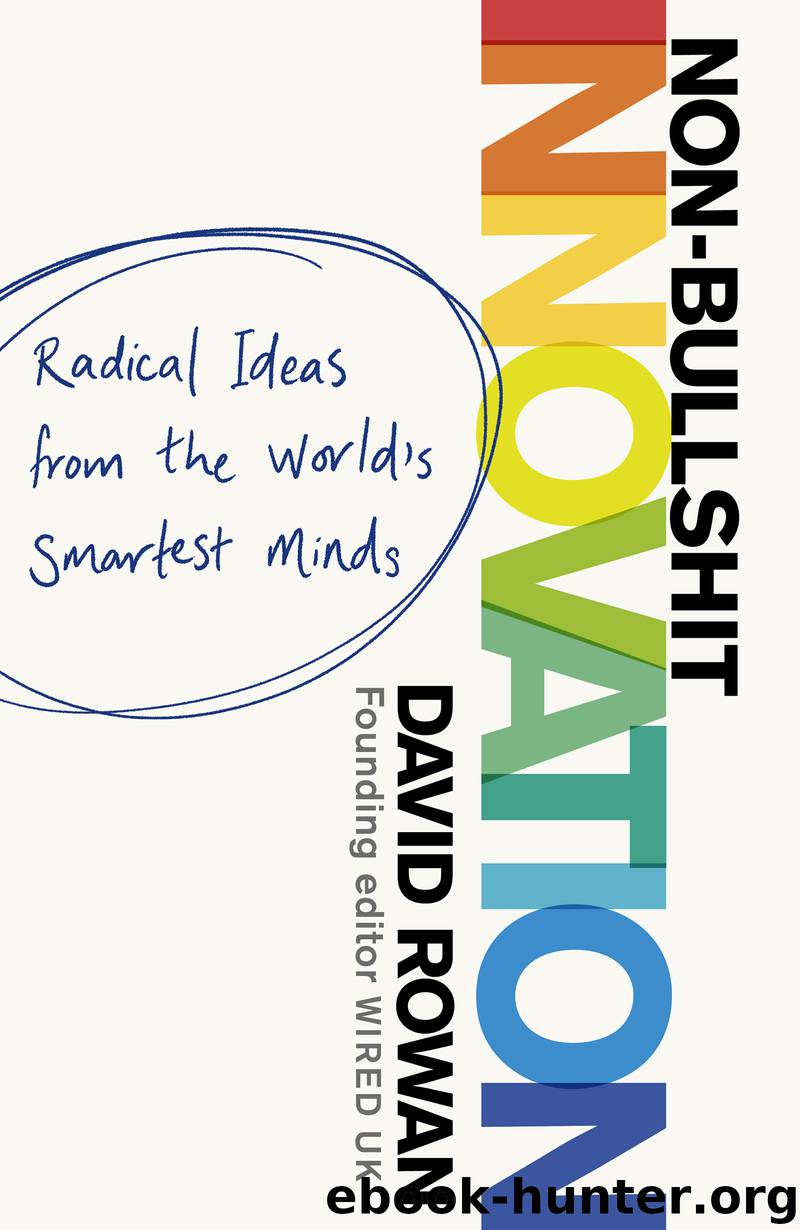Non-Bullshit Innovation by David Rowan

Author:David Rowan
Language: eng
Format: epub
ISBN: 9781473563308
Publisher: Transworld
Autodesk never set out to be a market-dominating multibillion-dollar corporation. Initially it was just a loose collective of software programmers pursuing their own obsessions.
When Mike Riddle started writing computer-aided-design software in his spare time back in 1977, the 16-bit processor on his S-100 computer was so basic, and the 48K of available memory so limited, that he had to assemble the program in pieces while waiting for larger memory boards to become available. Riddle was a big believer in Moore’s Law, though, which predicted the rate of growth in the industry as doubling every two years, so he knew more powerful microcomputers would eventually come along. And when in 1979 he was ready to release his software, called Interact, it didn’t take long to find thirty customers – the first being the California oil company Atlantic Richfield, which used Interact to plan dives for offshore oil rigs.
Riddle was a hobbyist – he’d built his first computer out of rudimentary components while at junior high school in California – and also a man of fixed views. He hated lawyers, for instance, so when in 1981 he received an $8,000 offer to sell the rights to his software, which became AutoCAD, he insisted on conducting the negotiations himself. When his demand for $15,000 was rejected, he successfully insisted instead on selling a non-exclusive licence for $1 plus 10 per cent of all future revenues. The purchaser was John Walker, whose company Marinchip Systems had made the circuit board that Riddle used.
Later that year, Walker invited a group of programmer friends to his house in Mill Valley, California, to suggest they combine resources to market software they developed in their spare time. Eighteen co-founders put up $59,000 the next year to start a company called Marin Software Partners, before its name was changed to Autodesk. The company launched AutoCAD, now rewritten for the new IBM personal computer, at the COMDEX computing trade show in November 1982. It proved a sensation: it was awarded Best of Show, the booth was packed, and over the next year Autodesk sold more than 1,000 copies. A company that had grossed $15,000 in the 1983 tax year took more than $1 million in 1984.
Suddenly the collective had to grow up.
On 21 June 1983, Walker, as CEO, wrote urgently to shareholders warning that Autodesk may be out of business within sixty days – because of AutoCAD’s unexpected success. ‘Our company is in a very deep crisis,’ he wrote. ‘Each single segment of the company is overloaded to the point of collapse. We cannot return all the calls from people who desperately want to do business with us, no less plan a coherent advertising campaign. We do not have a customer support group. We have no business plan, even an informal one. We have no budgets for departments, and no way to coherently authorize expenditures or to hire people. The management has not been given a mandate to hire people with stock options … This is a prescription for disaster.’
He
Download
This site does not store any files on its server. We only index and link to content provided by other sites. Please contact the content providers to delete copyright contents if any and email us, we'll remove relevant links or contents immediately.
Bad Blood by John Carreyrou(6472)
Rich Dad Poor Dad by Robert T. Kiyosaki(6311)
Principles: Life and Work by Ray Dalio(6116)
Playing to Win_ How Strategy Really Works by A.G. Lafley & Roger L. Martin(5744)
Management Strategies for the Cloud Revolution: How Cloud Computing Is Transforming Business and Why You Can't Afford to Be Left Behind by Charles Babcock(4492)
The Confidence Code by Katty Kay(4154)
Thinking in Bets by Annie Duke(4117)
American Kingpin by Nick Bilton(3707)
Delivering Happiness by Tony Hsieh(3330)
Project Animal Farm: An Accidental Journey into the Secret World of Farming and the Truth About Our Food by Sonia Faruqi(3138)
The Power of Habit by Charles Duhigg(3015)
The Tyranny of Metrics by Jerry Z. Muller(2953)
Mastering Bitcoin: Programming the Open Blockchain by Andreas M. Antonopoulos(2948)
Brotopia by Emily Chang(2947)
The Marketing Plan Handbook: Develop Big-Picture Marketing Plans for Pennies on the Dollar by Robert W. Bly(2899)
I Live in the Future & Here's How It Works by Nick Bilton(2898)
The Content Trap by Bharat Anand(2835)
Applied Empathy by Michael Ventura(2808)
Building a StoryBrand by Donald Miller(2803)
